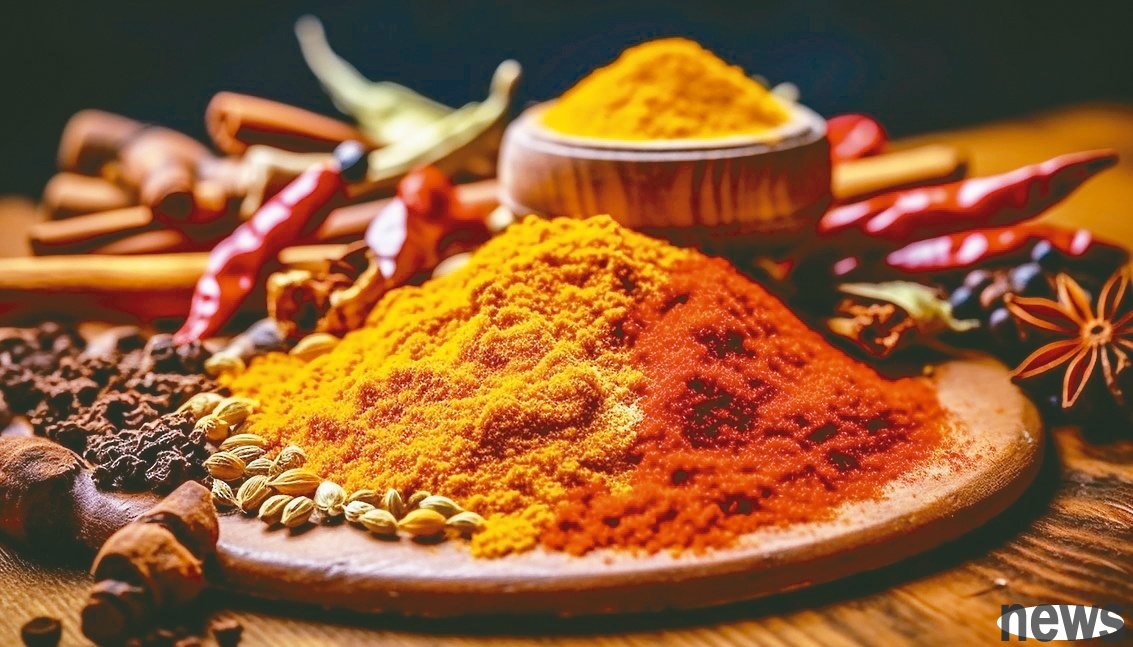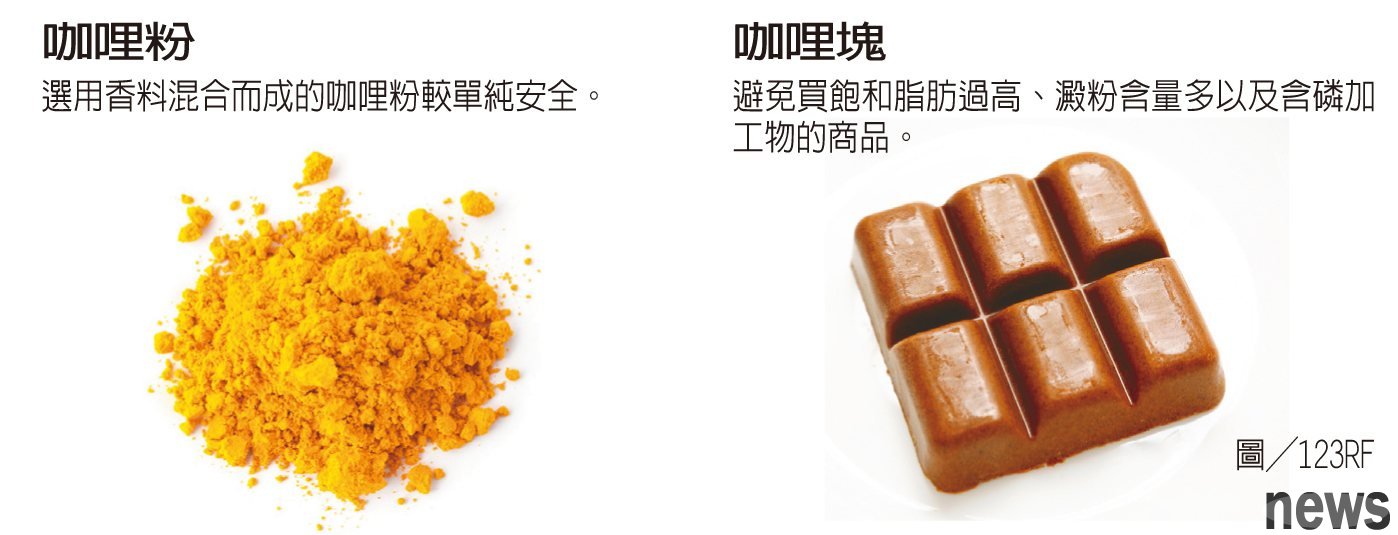
Curry originated in South Asia has become a popular diet around the world and has developed its own characteristics due to the cultures of various countries. Curry is usually made of a variety of spices such as ginger, clove, coriander, cumin, cinnamon, etc., and comes in various recipes, with flavors that are spicy or sweet. In recent years, various curry stores have been selling in Taiwan. What are the benefits of eating curry for the body? What mine areas are there? Today, Yuanqi Weekly News will teach you how to eat curry healthily.
curry is a common food in China, with a variety of flavors, ranging from Indian style to Thai green curry, red curry, yellow curry, or Japanese with heavy sweetness, and there are also bright yellow Taiwanese curry. The cooking methods are not the same, ranging from curry noodles, curry pieces to curry cubes and other forms. Chen Weiting, a nutritionist at the Nutritional Treatment Department of Zhenxing Hospital, said curry is considered to have anti-inflammatory and cardiovascular adjustment, and the reason is that it is the ingredient "Yellow".
{9There are more than 20 kinds of spices used in curry, including pepper, chili, mint, mustard, coriander (cilantro), clove and other spices. The main ingredients are ginger yellow, cumin, cinnamon, and cumin. Although the cooking methods and tastes vary slightly from place to place, the main ingredients of curry are not far apart. Chen Weiting said that curry's health benefits are mainly due to the nutritional value of ginger yellow, and it is not much different. However, there are fewer Japanese and Taiwanese spices and more spices in Indian curry may have a higher effect on antioxidant.
1. ginger yellowChen Yiting said that the most widely discussed nutritional value is "ginger yellow", which is often considered to have anti-cancer and anti-inflammatory effects; the "polyphenols" in ginger yellow have antioxidant and immunity effects, and the "quercetin" among them is also effective in anti-inflammatory and improving immunity. In addition, ginger yellow also has Omega-3 infertility and fatty acids, which can prevent dementia and activate brain intelligence. ginger yellow can also regulate blood sugar and blood lipids.
2. Cinnamon"Cinnamon" is also beneficial to blood sugar and blood lipid regulation, and also has antioxidant and anti-inflammatory effects.
3. CinnamCinnam is believed to improve stomach health, such as stomach irritation.
4. cumincumin is discussed more frequently in Chinese medicine, mostly because it is considered to have a "warming and replenishing" effect.
The treatment bag and curry block contain a lot of animal fat, which in turn causes inflammation of the body.makes curry nutritious and is often considered to be "dry and hot" because of its attributes. Chen Weiting explained that from the perspective of Western medicine, if the curry is a conditioning bag or curry block, it may have more animal fats, such as pork oil and other fats, which will not only make the body take high oil, but also easily cause inflammation. If you are worried about the body's "dry and hot" and even affect your sleep, it is recommended that Chinese doctors evaluate the body's condition before eating.
She also reminded that although ginger yellow powder has the effect of regulating blood sugar and blood lipids, if you eat microwave food, cold food or curry made of commercial curry pieces, in order to increase the consistency of the soup juice, powder will be added, which will be harmful to blood sugar regulation. You should pay more attention when choosing.
There is no problem with eating curry occasionally, and taking ginger supplements has disease contraindications.Although eating curry is not good at choosing quality, there are still some dietary taboos for some diseases. Chen Weiting said that because the daily consumption of curry is not high in ginger and there is no problem. Usually, you eat a lot of curry or take health foods such as ginger ginger supplements, which may be overdose. She said that especially pregnant women or pregnant women, because ginger has the effect of promoting blood circulation, it may increase bleeding risks.
In addition, ginger yellow can also affect the body's anticoagulant function. Therefore, those who use anticoagulant drugs, or those who plan to undergo surgery within two weeks should also avoid eating too much ginger yellow, which affects anticoagulant function and increases surgery risks. Furthermore, those with liver and cervical stones should also avoid taking a lot of ginger.
Curry blocks with high corks and ginger yellow corks should be avoided by patients with kidneys.One of about 8 adults in my country has kidney disease, and the prevalence rate is estimated to be as high as 12%. Chen Weiting said that there are many patients with chronic kidney disease in my country, and curry or some spices are high in the skin, while ginger yellow is a high-deep food, so people with kidney-related diseases should avoid it.
In addition, curry is aphrodisiac food on the Internet because it is rich in spices and has the effect of stimulating sexual desire. Is it true? Chen Weiting said that curry has a variety of spices. In addition to ginger, there are also a variety of spices such as red, cinnamon, cardamom, laurel leaves, and anise, which may affect hormones; whether it is male or female, if consumed in large quantities, it is indeed possible to stimulate hormones. However, if you just eat curry, it will not affect it. It should be noted that taking ginger capsule health foods will have more impact.
Who should pay attention to the amount of ginger yellow intake?Chen Weiting said that the main source of nutrients in curry is "Yellow Yellow". According to the safe consumption standard in Europe, the weight is about 0 to 3 mg per kilogram; taking an adult of 60 kilograms as an example, the amount taken a day is about 180 mg. However, unless you take supplements such as ginger capsules, you don’t need to overfill the amount of curry only. However, curry still has dietary taboos on some diseases, so the following ethnic groups should pay attention to their intake.
1. Pregnant or pregnant women2. Liver and cystic stones
3. Surgery should be performed within two weeks
4. Bone disease patients
5. People taking anticoagulant drugs

Curry dishes are diverse, ranging from fried food, white rice, noodles, bread to baked buns. Some curry ingredients are made directly from curry powder made of spices; some are made from curry pieces with semi-finished products; some are purchased for ready-made dishes and instant bags.
Choose good curry, Chen Yiting, a nutritionist at the Nutritional Treatment Department of Zhenxing Hospital, suggested starting with the nutritional marks and ingredients behind the food. Check whether the ingredients include animal fats such as pig oil, butter, etc., and palm oil, which are all higher in the ratio of raw to fat; vegetable oils such as salad oil are plant fat, and the ratio of raw to fat is lower.
curry is made by using curry powder directly mixed with spices, and the ingredients are pure and relatively healthy. As for the commonly used curry pieces on the market, powders such as powder and Taibai powder will be added to increase the consistency to form a block; and curry dishes will also be added to add "powder" to increase the consistency. This type of curry is not good for blood sugar adjustment, and the blood sugar fluctuations after consumption have large fluctuations.
Additional additives containing the word "phosphorus", it is best not to take them in kidney patients.5 '-Synthetic nucleoside phosphate diol, 5 '-Synthetic nucleoside phosphate diol, 5 '-Synthetic nucleoside phosphate diol, soy lecithin…… Chen Weiting said that these long strings of chemical ingredients are often seen in the food ingredients of curry blocks and conditioning bags. As long as the word "phosphorus" is the minerals that cannot be excreted by kidney patients. She reminded that there are many chronic kidney disease in our country, so we should pay special attention to and avoid it as much as possible when choosing.
Chen Weiting said that patients with high blood sugar, hyperlipidemia, hypertension and kidney disease should avoid fat, powder and phosphorus-containing processed substances when choosing curry. Generally, people recommend starting from nutritional standards and heat. According to healthy dietary concepts, the daily diet and fat intake should be less than 7% of the total hot intake; therefore, the amount of curry (20 grams) in a meal should be less than 3 grams (no more than 15 grams per 100 grams).
If the curry is slightly higher and the amount of fat, the ingredients should be white meat, seafood and vegetables.If the amount of curry and fat is slightly above the standard, what should I do if I can't bear to have a desire to be tempted? Chen Weiting said that if the standard amount of the raw and fat is at the standard limit, the "ingredients" of the curry can be adjusted, and the "white meat" or "seafood" is preferred, such as picking sausages, middle rolls, chicken, etc., avoiding the red meat with more fat content such as pork, lamb, beef.

The combination of vegetables is relatively free. Chen Weiting said that in addition to the common sausage, potato and husband, all kinds of vegetables can actually be tried. For example, the "eggplant" commonly used in Japanese soup curry has the characteristics of high-fiber vegetables, but also the function of protecting cardiovascular. She admitted that when nutritionists serve on the first line, they often encounter many people who reject leaf or green vegetables. Curry is a good way to encourage them to eat more vegetables. Curry can be cooked with cauliflower, melon, and mushrooms, such as cherry melon, cherry mushroom, apricot mushroom, etc., which are all good choices to increase vegetation.
If the curry powder is too thin to cook, add potatoes, pumpkin and other powders to thicken.It should be noted that the three common combination elements in curry are "Hushu, foreign stew, and macadamia", among which macadamia hides heat crisis. Chen Weiting said that curry has rice as the staple food, and macadamia is also a powdered dish. If you eat it together, the heat will easily exceed the standard. It is recommended that white rice be reduced or not eaten, and macadamia is directly used as the staple food.
In addition, curry pieces or commercially available curry with cold and microwaved foods, most of them are added with powders such as taibai powder and flour to facilitate the molding of the pieces. They will be thicker when cooking, but they will also cause blood sugar to become unstable. Chen Weiting suggested that if you use "curry powder" and want to combine the consistency of curry, you can add potatoes, pumpkin and other powders to cook together. The more you cook, the more juice it will be, and put into the soup juice through the powder, making the curry soup become as thick as a curry piece.
Responsible editor: Gu Zihuan